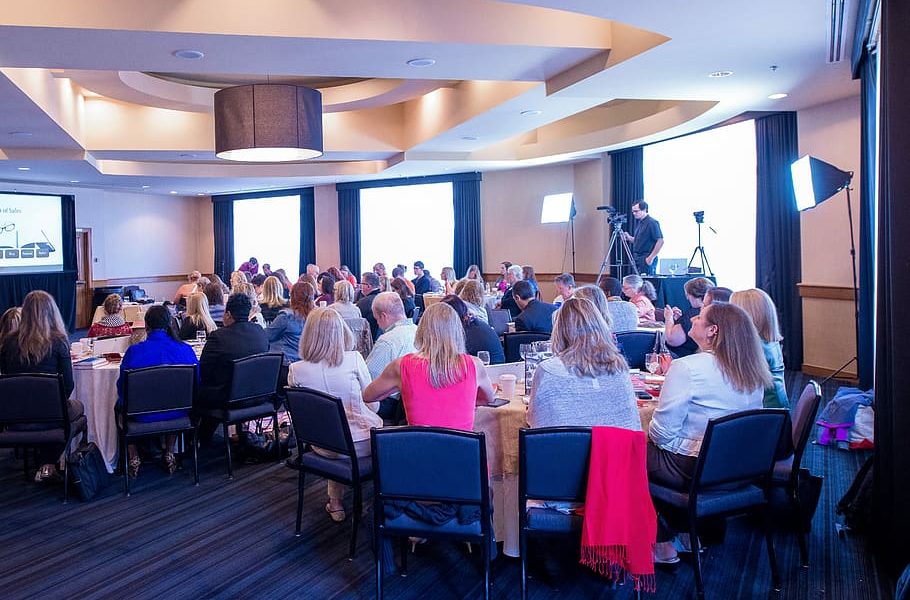Trade shows are an excellent opportunity for businesses to showcase their products, connect with potential clients, and gain industry insights. To ensure your trade show is a resounding success, you need a well-thought-out marketing strategy. Here are nine practical trade show marketing tips for event organizers:
1. Identify Your Goals
Before diving into the logistics, clearly define what you aim to achieve with the trade show. Having specific goals will guide your marketing efforts and help measure success.
Action Steps:
- Determine whether your primary objectives are lead generation, brand awareness, product launches, or networking.
- Set measurable targets such as the number of leads collected, sales closed, or new partnerships formed.
- Communicate these goals to your team and stakeholders to ensure everyone is aligned.
2. Know Your Audience
Understanding your target audience is crucial for tailoring your marketing messages and attracting the right attendees.
Action Steps:
- Create detailed audience personas that include demographics, job titles, industry segments, and pain points.
- Use surveys, past event data, and industry reports to gather insights about your audience.
- Tailor your marketing content to address the specific needs and interests of your target audience.
3. Leverage Multi-Channel Promotion
Maximize your reach by promoting your trade show across multiple channels. Diversified marketing efforts can attract a broader audience and increase event visibility.
Action Steps:
- Use social media platforms like LinkedIn, Twitter, Facebook, and Instagram to create event pages, share updates, and engage with potential attendees.
- Implement email marketing campaigns to send personalized invitations, reminders, and updates.
- Utilize industry publications, blogs, and websites to advertise your trade show.
4. Create Compelling Content
Engaging content can generate excitement and interest in your trade show. Provide valuable information that highlights what attendees can expect.
Action Steps:
- Develop a content calendar that includes blog posts, videos, infographics, and social media updates.
- Highlight key speakers, sessions, and exhibitors through interviews, sneak peeks, and promotional videos.
- Share success stories and testimonials from past trade shows to build credibility and generate interest.
5. Offer Early Bird Specials and Incentives
Encourage early registrations by offering special discounts and incentives. This not only boosts ticket sales but also helps create buzz around your event.
Action Steps:
- Provide limited-time discounts for early registrants.
- Offer exclusive perks such as VIP access, priority seating, or special giveaways for early sign-ups.
- Promote these incentives through your marketing channels to create a sense of urgency.
6. Engage Partners and Sponsors
Collaborating with industry partners and sponsors can enhance your trade show’s credibility and reach.
Action Steps:
- Identify potential partners and sponsors who align with your event’s goals and audience.
- Create attractive sponsorship packages that offer value to sponsors while helping you offset event costs.
- Leverage partners’ and sponsors’ networks to promote your event and extend your reach.
7. Utilize Social Media Before, During, and After the Event
Social media is a powerful tool for promoting your trade show and engaging with attendees throughout the event lifecycle.
Action Steps:
- Use event-specific hashtags to build community and track conversations.
- Share live updates, behind-the-scenes content, and attendee interactions during the event.
- Post-event, share highlights, thank-you messages, and follow-up content to maintain engagement and build anticipation for future events.
8. Provide Networking Opportunities
Networking is a key draw for trade show attendees. Facilitate connections by providing structured and informal networking opportunities.
Action Steps:
- Organize networking sessions, meet-and-greet events, or roundtable discussions.
- Use event apps or platforms that allow attendees to schedule meetings, connect with others, and participate in discussion forums.
- Encourage exhibitors and sponsors to engage with attendees and offer networking opportunities at their booths.
9. Measure and Analyze Performance
Evaluate the success of your trade show marketing efforts by measuring key performance indicators (KPIs) and analyzing the results.
Action Steps:
- Track metrics such as registration numbers, attendee demographics, lead generation, social media engagement, and attendee feedback.
- Use surveys and post-event evaluations to gather insights from attendees, exhibitors, and sponsors.
- Analyze the data to identify what worked well and where there is room for improvement, and use these insights to inform future trade shows.
By implementing these trade show marketing tips, you can create a comprehensive strategy that attracts the right audience, generates excitement, and ensures the success of your event. Focus on understanding your audience, providing value, and continuously optimizing your efforts to achieve your goals. Happy organizing!

